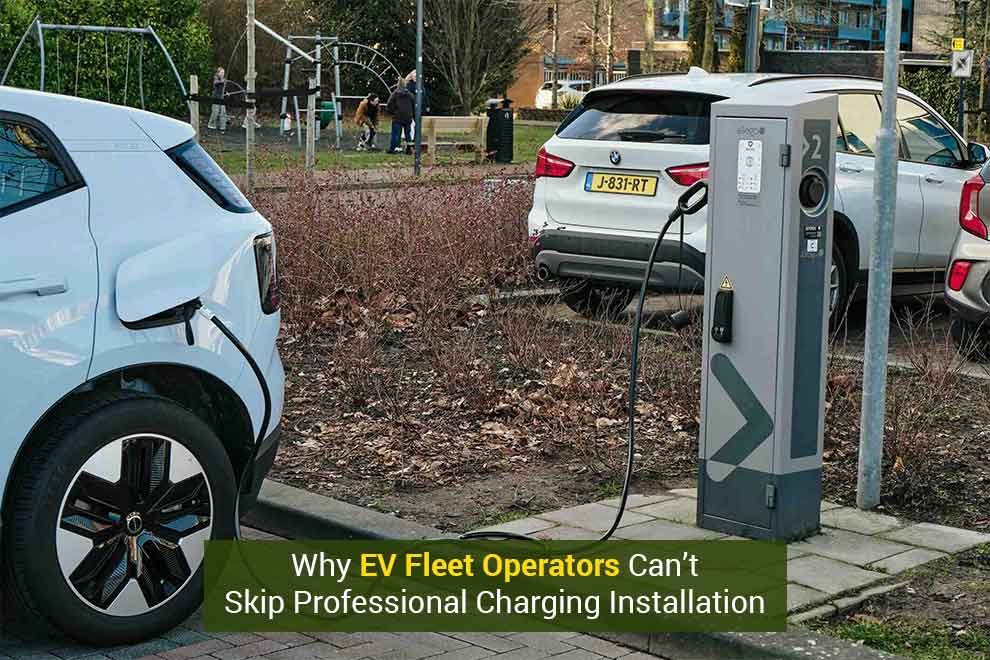As electric vehicles continue to claim a larger share of the commercial fleet market, operators face a critical challenge that is often overlooked: the complexity of charging infrastructure. Installing chargers is not as simple as plugging in a few wall units. The process involves electrical load calculations, site-specific constraints, permitting, and long-term scalability concerns. When these factors are not professionally managed, even a minor oversight can cascade into expensive delays and operational hiccups.
Many fleet operators, driven by the urgency to electrify, make the mistake of treating EV charging like a plug-and-play solution. In reality, the electrical demands of a fleet — particularly with medium- and heavy-duty vehicles — exceed what a traditional facility can support without significant upgrades. Power supply configurations, transformer specifications, and the coordination with local utilities are crucial technical aspects that demand expert handling. Misjudging these can result in both safety hazards and financial waste.
Furthermore, professional charging installation is key to long-term reliability. When fleets depend on daily charging cycles to maintain operations, downtime translates directly into lost revenue. A robustly engineered system ensures redundancy, fault tolerance, and future readiness for expanding fleets. More than just installing chargers, it’s about designing an ecosystem that integrates with your fleet’s rhythms and business goals.
Avoiding Costly Pitfalls with Professional Planning
One of the most significant benefits of professional charging installation lies in the ability to avoid unexpected costs down the line. Improperly installed systems often necessitate retrofitting, a process far more expensive than getting it right the first time. Beyond financial concerns, such errors can also delay vehicle deployment schedules and disrupt operational timelines. These bottlenecks could jeopardize entire electrification strategies and affect customer commitments.
Charging infrastructure is deeply interconnected with building codes, utility interconnection requirements, and safety standards. Professional installers not only understand these regulatory frameworks but also have experience navigating them efficiently. This ensures compliance from day one, reducing the risk of regulatory penalties and legal exposure. Moreover, these experts bring knowledge of rebate programs and tax incentives that can materially offset upfront costs if applied for properly.
Consider the importance of modularity and system flexibility. Companies like ChargeTronix have engineered solutions with distributed designs that allow multiple dispensers to be powered from centralized cabinets. This not only maximizes uptime but also allows for rapid expansion without overhauling the entire system. With such intelligent architecture, operators gain both reliability and adaptability, vital attributes in a market where fleet needs can shift overnight. These forward-thinking features, paired with expert installation, are what differentiate a sustainable investment from a costly experiment.
The Role of Data and System Integration
A professional charging installation extends beyond cables and current; it is the cornerstone of a data-driven fleet management strategy. Today’s fleets require charging systems that integrate seamlessly with telematics, maintenance logs, and energy management software. This level of integration is not achievable through ad hoc installations or piecemeal solutions. Professionals ensure that the physical infrastructure can talk to digital systems, closing the loop between operational efficiency and energy consumption.
Smart charging infrastructure provides real-time feedback on usage patterns, peak load times, and energy expenditures. For large fleets, this data is not just nice to have—it’s indispensable. Charging analytics can inform scheduling, help avoid demand charges, and support predictive maintenance. Without proper planning and installation, fleets may find themselves unable to fully leverage these insights, missing out on both cost savings and operational improvements.
Additionally, integrated systems support load balancing and dynamic power allocation, allowing for more efficient energy use. This is particularly important for fleets operating under time-sensitive constraints. By distributing power intelligently among vehicles based on priority and available energy, operators can extend vehicle uptime and reduce grid stress. Professional installers work hand-in-hand with software vendors to ensure the necessary protocols and hardware are in place from day one.
Safety Isn’t Optional—It’s Foundational
Fleet operators managing dozens or even hundreds of vehicles must consider not just efficiency, but also safety. High-voltage charging carries inherent risks that require careful design and installation. Improper grounding, poorly insulated cabling, and inadequate ventilation can lead to serious hazards, including fires and electrocution. These risks are magnified when installations are done without the oversight of certified professionals who understand national electrical codes and manufacturer specifications.
A common oversight is underestimating the ventilation needs of certain charging environments. When placed indoors or in semi-enclosed spaces, chargers may generate heat that, if not dissipated properly, can degrade equipment and pose fire risks. Professional assessments take into account airflow, ambient temperature, and cooling systems to ensure that installations operate within safe parameters year-round. This level of planning is critical to long-term sustainability.
Furthermore, liability concerns for unsafe installations are not trivial. In the event of an incident, insurance companies and regulatory bodies will scrutinize whether installations were performed by licensed professionals. Skirting these requirements can leave fleet operators exposed to lawsuits, fines, and reputational damage. Investing in professional installation isn’t just about performance—it’s about mitigating long-term legal and safety risks.
Future-Proofing for Fleet Growth and Innovation
The EV landscape is evolving at a rapid pace, and charging technology is keeping stride. Fleets that invest in rigid or underpowered infrastructure today may find themselves unable to adopt next-generation vehicles tomorrow. Professional installation teams take future vehicle requirements into account, including compatibility with higher voltage platforms, increased amperage needs, and evolving communication protocols between vehicle and charger.
Scalability must be built into the installation design from the outset. This means planning for additional charging ports, anticipating utility upgrades, and laying conduit infrastructure that can support expanded capacity. Without this foresight, operators may face the burden of digging up newly paved lots or replacing entire systems to meet future needs. These disruptions are avoidable with the right professional consultation at the planning phase.
Moreover, many municipalities are beginning to enforce “EV readiness” codes that require scalable infrastructure. Professional installers are familiar with these mandates and ensure that installations meet not only current regulations but also those likely to emerge in the near term. In doing so, fleet operators safeguard their investment and maintain the operational agility needed to adapt to new technologies and policy changes.
The Strategic Edge of Reliability and Brand Reputation
For logistics companies, school districts, municipal services, and other fleet-dependent entities, reliability is non-negotiable. Downtime doesn’t just mean idle vehicles; it signifies missed deliveries, frustrated customers, and a potential breach of service level agreements. Professionally installed infrastructure drastically reduces the risk of equipment failure, communication errors, and power distribution issues that can bring operations to a standstill.
Beyond the operational impact, there is a reputational dimension to infrastructure decisions. Clients, investors, and communities are paying attention to how companies approach sustainability. A professional, well-designed charging setup is a visible commitment to operational excellence and environmental responsibility. It signals to stakeholders that the company is serious about its transition and not simply checking a regulatory box.
In a competitive landscape, this professionalism can be a differentiator. Companies with robust, scalable, and expertly installed charging infrastructure are better positioned to win contracts, attract partnerships, and lead within their industries. The difference between cutting corners and investing in quality becomes starkly visible not only in performance metrics, but in the confidence of every stakeholder involved.
Also Read: Bajaj Chetak Electric Scooter Price: Is It a Premium Electric Ride?











